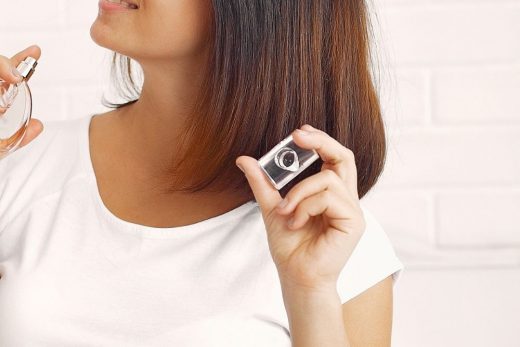Treating yourself to a facial is one of life’s little luxuries. But with the pandemic forcing spas around the nation to close and the risk of developing COVID-19 still looming, an at-home facial is the next best choice.
Luckily, a multitude of skin care products and devices in market makes taking facial steps at home a walk in the park.
Nighttime is a great time to start. “During the day, skin is in a more protective mode, but at night, skin is more relaxed and starting repair mode, so it can readily accept extra love,celebrity aesthetician and founder of her eponymous skin care line.
Here’s how you can treat yourself to a DIY facial.
Whether it’s a tried-and-true skin care regimen, how often you wash your hair, or the cosmetics you’re curious about, beauty is personal.
That’s why we rely on a diverse group of writers, educators, and other experts to share their tips on everything from the way product application varies to the best sheet mask for your individual needs.
We only recommend something we genuinely love, so if you see a shop link to a specific product or brand, know that it’s been thoroughly researched by our team.
Step 1: Cleanse
In order to maximize every step, the idea is to start with a clean slate. The general rule is that if you’re wearing makeup, you should use a cleansing lotion or oil first. Then, you cleanse again with a lightly foaming gel or exfoliating cleanser to remove residue.
“The emollients used in makeup are removed more effectively with other emollients,”
Start by massaging the lotion or oil on dry skin first. Then, wet your fingertips and massage it through a second time.
To rinse, Jennifer Swisher, aesthetician at recommends using a microfiber washcloth to provide lifting action and make sure it all comes off.
Next, cleanse again with a sulfate-free, low-foaming gel with nourishing components. These components won’t dry your skin out.
“Your skin barrier is genetically coded to produce a certain amount of oil. If you fully strip that off, you’re sending the wrong message to your skin to produce more oil, and that’s when you create imbalances in your skin,” esthetician and founder.
If you have oily skin, you may want to opt for a cleanser, like Farmacy Clean Bee Ultra Gentle Facial Cleanser, which helps remove excess oil.
For dry skin, the Renée Rouleau Vitamin-Infused Cleansing Emulsion cleans without stripping the skin.
And for normal skin, CeraVe Renewing SA Cleanser gently exfoliates while removing oil and dirt.
Step 2: Exfoliate
Exfoliating helps remove dead skin cells from the surface of your skin, and it helps make sure the rest of the products you apply are properly absorbed.
There are a few different types of exfoliators:
- Physical exfoliators include products such as facial scrubs, at-home microdermabrasion tools, or derma-planing blades.
- Chemical exfoliators refer to acids, like lactic or glycolic, which help dissolve dead skin cells.
For the ideal at-home facial, Rouleau recommends using both physical and chemical exfoliators, starting first with an acid exfoliator (try the Drunk Elephant T.L.C. Sukari Babyfacial AHA + BHA Mask)
After leaving it on for 10 minutes or so, she recommends following it up with a physical scrub “to make sure you actually remove the dead skin cells.” Try the Tata Harper Regenerating Cleanser or SkinCeuticals Micro-Exfoliating Scrub.
You can also just do one or the other, depending on your skin type.
“Someone with oilier skin can get away with exfoliating four or five times per week,” “Someone with drier skin should exfoliate much less, about once a week.”
Step 3: Steam
Now that you’re working with freshly exfoliated skin, you can steam with an at-home steamer
Steaming offers several benefits.
“It heats up the internal temperature of the skin and slightly dilates the pores. This makes the hardened oils in the pores (aka blackheads) melt a little, making extractions easier to perform,” “It also increases blood flow to the skin, and it is very hydrating because it brings a lot of moisture to the skin.”
Directions
- Fill a bowl with warm or hot – but not boiling – water.
- Place a towel over your head and hover over the bowl, about 6–8 inches away.
- Enjoy for 5–10 minutes before gently patting your face dry, doing extractions, and following up with a moisturizing face mask.
That being if you steam, it’s important that you quickly follow up with moisturizing products, like a mask, or an extraction (more on that below).
“You never want to leave skin bare after steaming because it will get tight and you will lose all that moisture,” adds Rouleau.
Steaming might not be suitable for those with skin problems, like melasma. If you’re unsure whether steaming is the best step for your skin, consult a dermatologist.
If you’re steaming at home, only do it for 5–10 minutes. Any longer than that and you risk dehydration.
Step 4: Extract
If you’re considering extracting your own blackheads, it’s important to do it correctly to prevent damage to your skin and pores.
Directions
- If you’re using an extractor tool, follow the manufacturer’s instructions.
- If using your fingers, wash your hands thoroughly.
- Wrap your fingers in tissue or toilet paper.
- Place your fingers around the comedo, and squeeze once.
- Change your positioning to prevent marking up your skin or causing inflammation, and squeeze a second time.
- If nothing comes out, move on.
- Dab with a topical acne treatment.
Step 5: Mask
There are several kinds of masks, including:
- Gel. Gel masks, like the Glow Recipe Watermelon Glow Sleeping Mask, are cooling and calming to the skin and good for all skin types — especially those with redness and rosacea.
- Clay. Clay masks, like the Origins Original Skin Retexturing Mask with Rose Clay, are especially good for oily skin and clogged pores. The clay helps draw out impurities from the skin. “If it dries and cracks into a million pieces, it means the mask is too strong,” “Look for a hydrating mask infused with ingredients that are nourishing for the skin.”
- Cream. Cream masks, like the FAB Pharma Arnica Relief & Rescue Mask, are usually a heavy consistency. They’re great for drier skin types that need more lipids, oils, and nourishing components.
- Sheet masks. Sheet masks, like Tatcha Luminous Dewy Skin Mask, are typically gel, infused with water-based hydration. These masks are also great for dry skin types.
You can also DIY a great mask at home with ingredients like yogurt, honey, oatmeal, avocado, and papaya.
The perfect mask for you depends on your skin type. But no matter which type you reach for, leave it on for 10–20 minutes, then remove with a damp washcloth.





